Goat cheese is an easy and delicious cheese for beginners. It’s also affordable and delicious. Try one of the six flavor options!
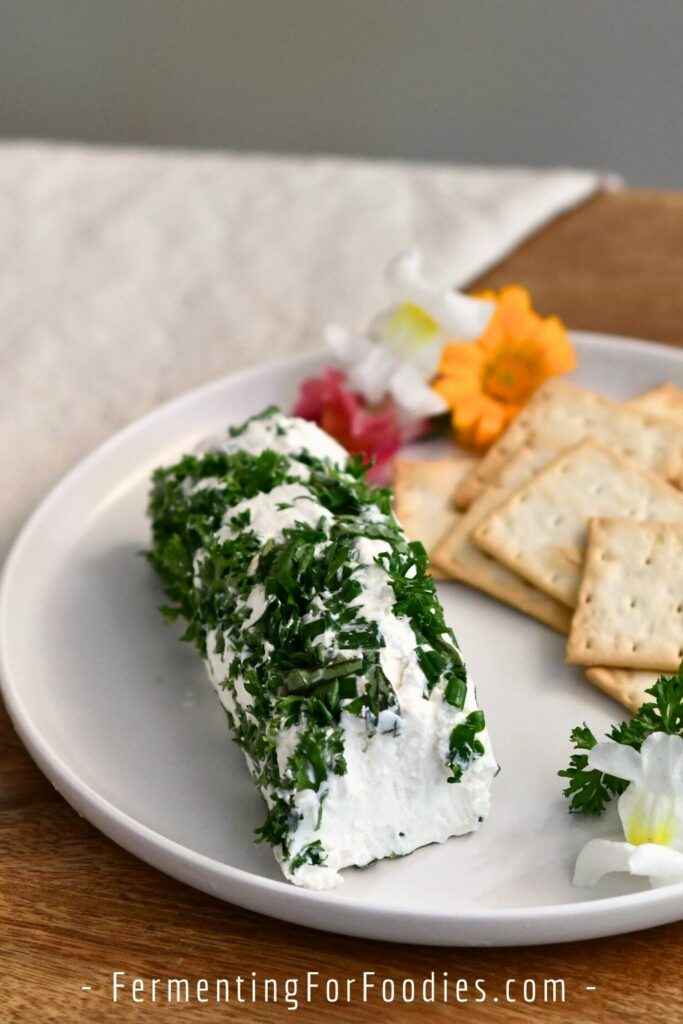
Homemade goat cheese is a delicious addition to salads, crepes, pizza, and sandwiches. This traditional recipe has a creamy texture, perfect for spreading on crackers.
If this is your first time making cheese, check out my post on how to make cheese at home. It provides more details on each of the steps in this recipe.
Flavoring Soft Goat Cheese
My daughter loves goat cheese on bagels for breakfast. She loves it even more than cream cheese!
Here are a few popular flavor additions:
- Herb and garlic: Try a Boursin-style mix of garlic and herbs.
- Fresh herb: Add 2 Tbsp of fresh herbs like basil, chives, and dill.
- Olive: Use 1-2 Tbsp of a flavorful olive tapenade.
- Roasted garlic: A few cloves of roasted garlic with a drizzle of olive oil is delicious.
- Lemon pepper: Add 1/2 tsp of freshly ground black pepper with 1 tsp of lemon zest.
- Fruit: Add 2 Tbsp of blueberry or cherry jam.
How to store and serve goat cheese
There are a few ways to add flavor to goat’s milk cheese. It really depends on how you want to store and serve your cheese. I chose to photograph a cheese log, but we usually store and serve our cheese from a glass ramakin.
Here are 4 storage and serving options:
- Simple glass container: Storing and serving from a glass food storage dish is easy. Stir any additional flavors in when you add the salt for an evenly distributed flavor. This is necessary if you’re adding dried herbs.
- Flavors on top: For a fancier serving option, pack the cheese into the glass storage dish then add the flavors on top. This is necessary if you want to add a drizzle of olive oil or tapenade.
- Cheese logs: If you drain the cheese for 24 hours, you can form a cheese log. Make a cheese log by sprinkling the toppings over a piece of wax paper, then rolling the wax paper around the cheese to make a log shape. Watch the video in the recipe card to see how I rolled the cheese log in the photos.
- Freezing: This recipe makes around 4 cups of cheese. Luckily goat cheese freezes really well! Just put it in an air-tight container and store it in the freezer for up to 6 months.
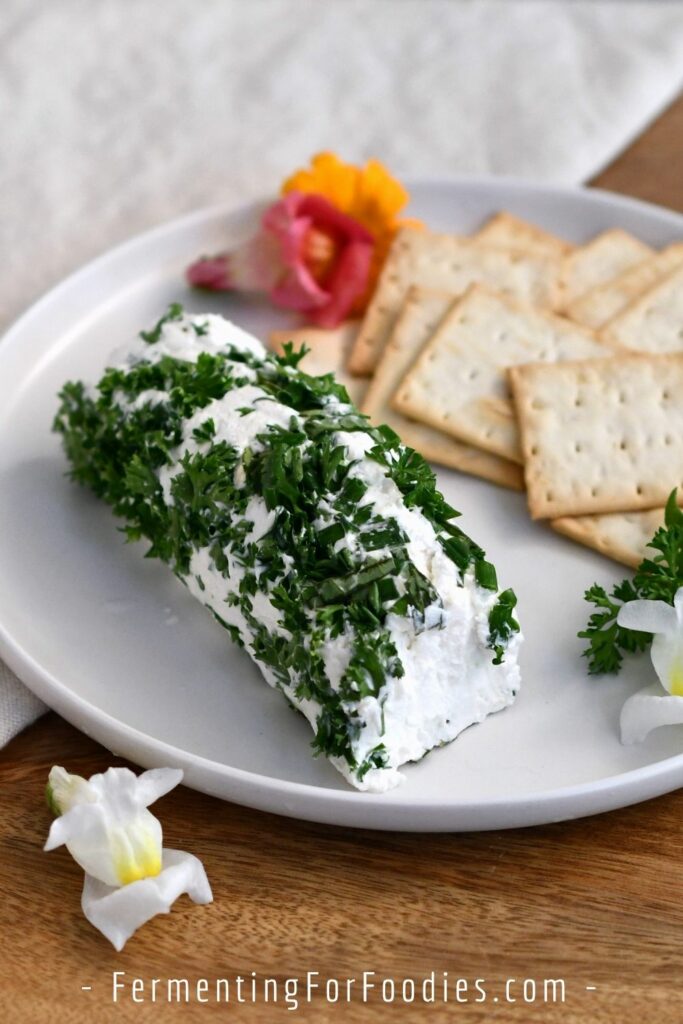
How to make goat cheese or chèvre
Soft goat cheese, like chèvre, is an easy and delicious cheese for beginners. Adding flavors to goat cheese turns it into an impressive appetizer. See the section above for more information on how to store and flavor goat cheese.
- Prep Time: 10 minutes
- Total Time: 10 minutes
- Yield: Approx. 1 1/2 lbs
- Category: Cheese
- Method: Cultured
- Cuisine: French
- Diet: Vegetarian
Ingredients
- 1 gallon of whole goat’s milk
- 1/8 tsp food grade calcium chloride (optional, but improves yield)
- 1/8 tsp mesophilic starter in 2 Tbsp water (see notes for options)
- 1/4 rennet tablet mixed in 2 Tbsp water (or 1/8 tsp liquid rennet)
- 1 tsp salt (non-iodized)
Instructions
- If you want help with any of these steps, watch the video below the recipe.
- Heat milk to 76F (24C). Stir in the calcium chloride, mixing thoroughly. Add the rennet and the mesophilic culture at the same time. Stir with an up-and-down motion to ensure even mixing.
- Maintain at 72F (22C) for 12 hours to set the curd. After 12 hours, it will have formed a thick curd. Line a strainer with two layers of butter muslin. Gently pour in the curd. I recommend using a spoon to ladle in the curd once you’ve finished pouring off the whey. The curd won’t be set as firmly as other cheeses. (And save that whey! It’s packed with protein and flavor).
- Hang in the butter muslin for 6-24 hours, until you have reached the desired thickness. A shorter time, (6 hours) will result in a soft spreading cheese. A longer time will result in a firmer, crumbling cheese.
- When the cheese is finished draining, place it in a bowl. Add the salt. Additional flavors, like herbs, can either be stirred in with the salt or added on top of the cheese. See the sections above for more information on flavoring and forming the cheese.
- Store in an airtight container in the fridge for up to 3 weeks, or freeze for up to 6 months.
Notes
- Chèvre has its own specific mesophilic culture
. However, soft goat cheese can be made with any type of mesophilic culture. You can even use 2 Tbsp of milk kefir or mesophilic yogurt. Milk kefir will result in a stronger flavored cheese. For a mild-tasting cheese, don’t add any culture.
- Calcium chloride isn’t traditionally added to chèvre, however, it does improve the yield of goat cheese.
Nutrition
- Serving Size: 2 oz
- Calories: 152
- Sugar: 0.5g
- Sodium: 208mg
- Fat: 11.9g
- Saturated Fat: 8.3g
- Carbohydrates: 0.5g
- Fiber: 0g
- Protein: 10.5g
- Cholesterol: 26mg
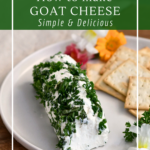
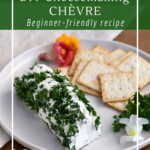
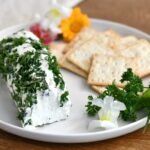
This is a great homemade goat cheese recipe! Thanks for sharing this!
Thanks!